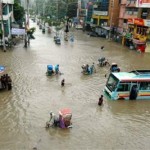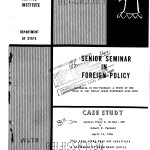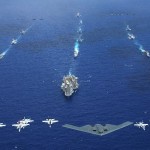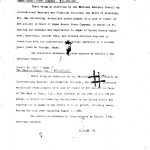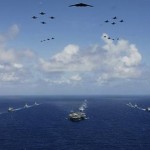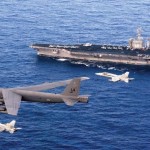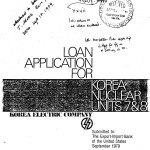
South Korea experienced rapid economic growth in the 1970s which pushed the nation out of it’s post-war destitution. At the time, the Park Chung-hee administration invested massively in heavy industries and, in order to supply more electricity for the country’s new industries and growing citizenry, Park also invested in nuclear energy.
This 1979 report from the Export-Import Bank of the United States examines the finances, project costs, and benefits of lending capital to two nuclear plants in the southwestern area of South Korea known as Units 7 and 8.
This report was released to the Nautilus Institute under the US Freedom of Information Act (FOIA)


